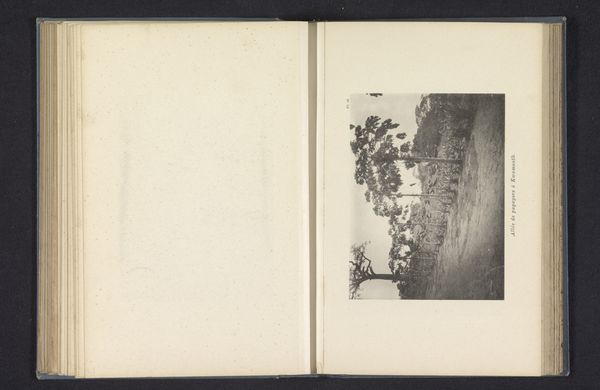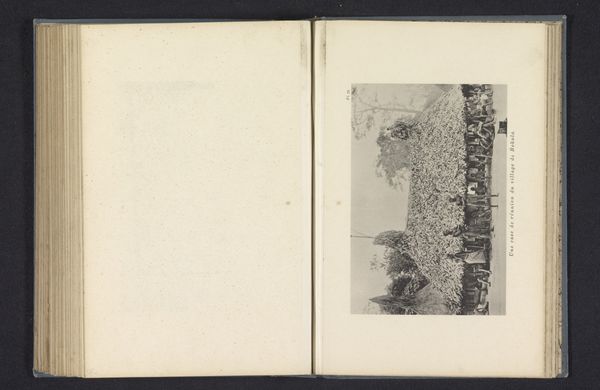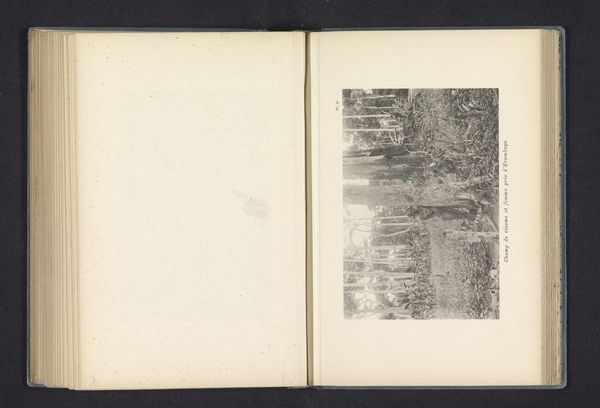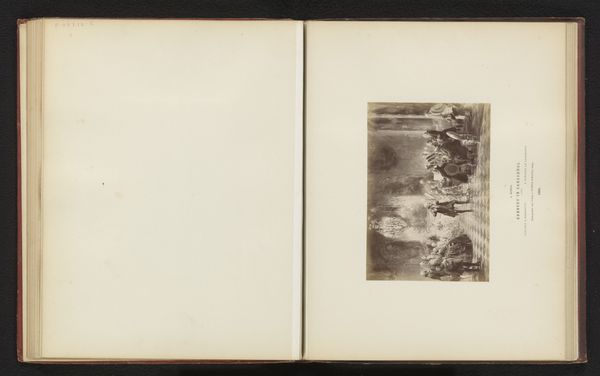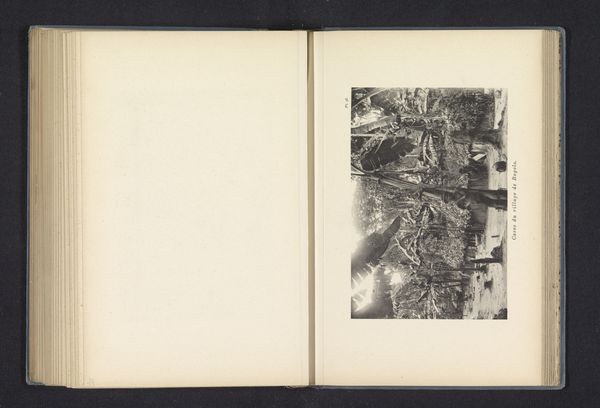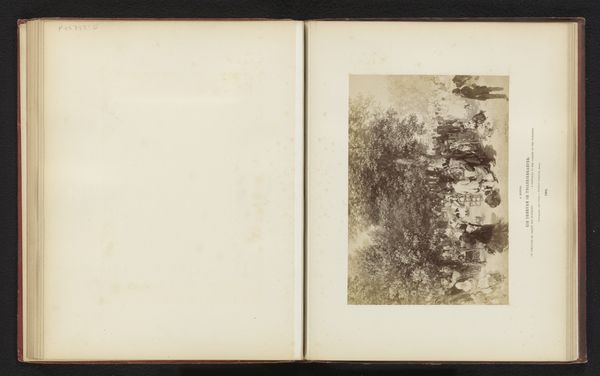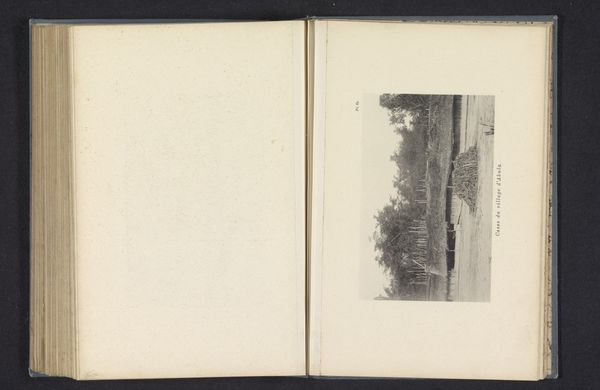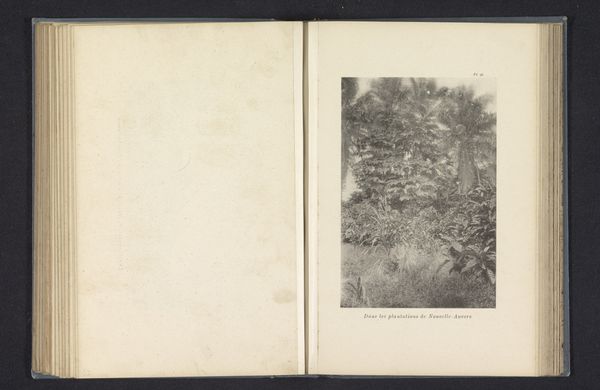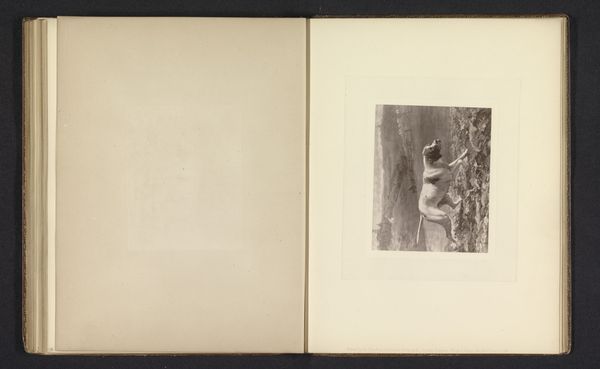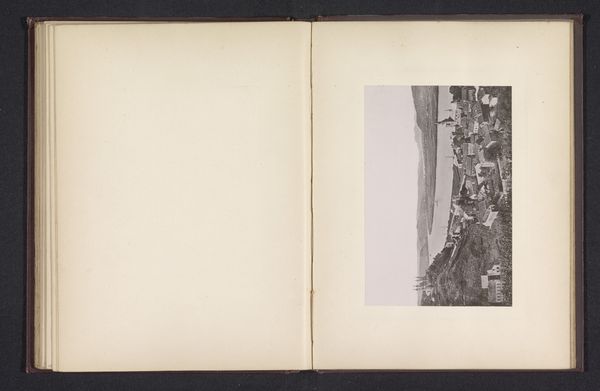
photography, gelatin-silver-print
#
african-art
#
photography
#
gelatin-silver-print
Dimensions: height 109 mm, width 147 mm
Copyright: Rijks Museum: Open Domain
Editor: This gelatin-silver print, titled "Inwoners voor een woning te Mumbia," was taken in 1896 by Franz Thonner. It depicts people, seemingly residents, outside of a dwelling. There's a stark rawness to this image that captivates me. What underlying stories do you see woven into its fabric? Curator: The power of this image rests, in part, on how it freezes a particular moment in time, preserving cultural memory, or at least, the photographer’s perception of it. The dwelling itself is a potent symbol – a place of safety, community, and identity. Notice how it's constructed. What materials do you think were used and what significance might those materials have in the local context? Editor: From the looks of it, the building appears to be made of natural materials - perhaps thatch, wood, and mud, sourced from the immediate surroundings? It seems like a very intentional construction, connected to the land. Curator: Exactly. And the residents posed in front become emblems themselves. Consider their attire, posture, expressions - all encoded with meaning about their roles within the community, their relationship to the outside world, and the forces of colonization potentially bearing down upon them. Look closely—what can we infer from the limited detail? Editor: There's a dignity, a quiet strength in their faces. Their placement—in front of their home—speaks volumes about connection to place. Curator: Precisely. It asks us to consider how visual representation can either perpetuate stereotypes, or perhaps, offer a glimpse into a shared humanity. Editor: It makes me think about the ethics of portraiture. The subjects might never have chosen to have their image recorded this way, so the power lies with the photographer and ultimately, the viewer. Curator: Indeed. These photographs act as cultural artifacts that simultaneously reveal and conceal aspects of human experience. Editor: This perspective really underscores the idea of photography as not just a record but an active interpretation of a specific moment in time. Thank you for opening my eyes to those hidden stories.
Comments
No comments
Be the first to comment and join the conversation on the ultimate creative platform.

